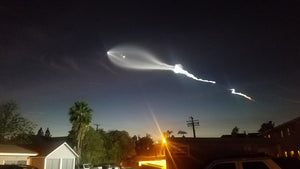Mercury Elongation & Uranus Conjunction
Mercury is hard to spot most nights. This isn't necessarily due to its distance from Earth: The planet orbits close to the sun, which means its light is usually washed out in the evening sky. On the evening of Saturday, January 23, Mercury will appear 18.6° to the east of the setting sun. That's the maximum angular distance the two bodies can reach also known as an elongation. With that distance between them, Mercury will appear especially bright above the horizon. Look for Mercury in the last two weeks of January. You'll need a clear view toward the west, as Mercury will appear 16° above the horizon in the southwestern sky. It will be around for only a brief period, setting about 90 minutes after the sun does.
Uranus is another challenge for amateur astronomers, usually too faint for most of us to see with the unaided eye, and it's difficult to find without a computer guided telescope. But on Jan. 20, Uranus will be located right between the Moon and Mars! See Uranus move between the Moon and Mars January 19th - 21st.
Be sure to catch these awesome events in January. Plus there are many more celestial events to look forward to in 2021.
Clear skies,OCtelescope







